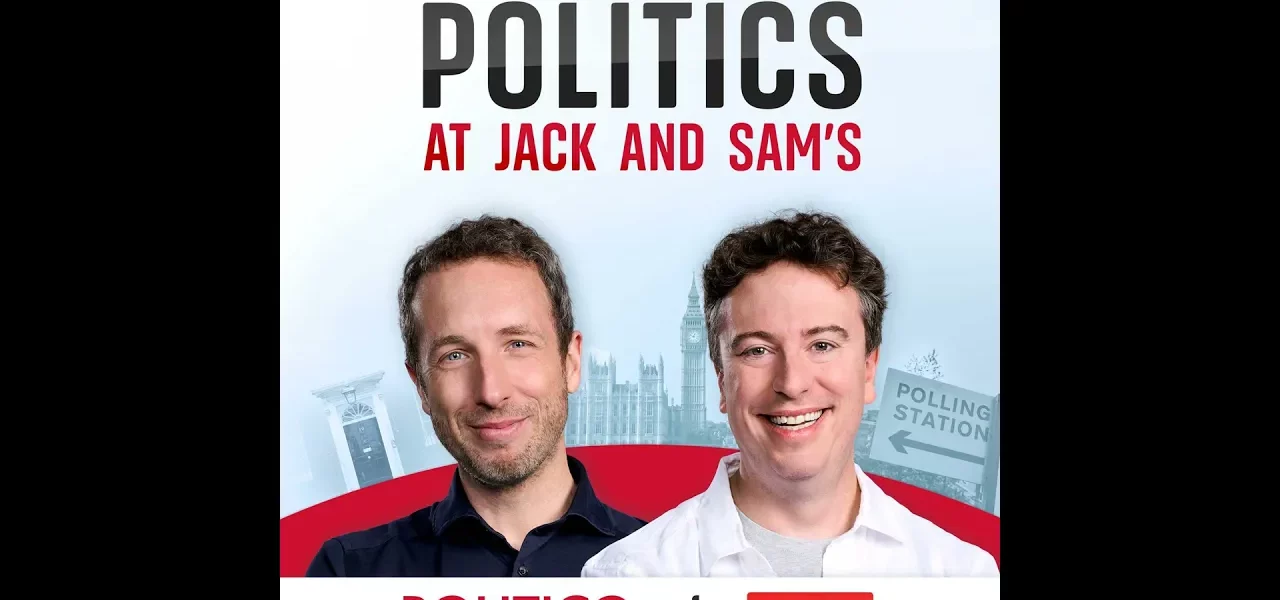Friday Edition of Politics at Jack and Sam’s Daily

Welcome to the Friday edition of Politics at Jack and Sam’s Daily, your go-to podcast for everything you need to know about the current election campaign. Join Sam Coates of Sky News and Jack Blanchard of Politico as they dissect the latest polling data, party strategies, and campaign dynamics.
Introduction
As the political landscape shifts and unfolds daily, we find ourselves at the 23rd day of the election campaign, with just 20 days remaining. This period is marked by fluctuating polling numbers and the palpable tension among the main parties. In this article, we will delve into the latest polling data, the strategies employed by major parties, and the implications of these developments for the upcoming election.
The Impact of Recent Polling Data
Recent polling data from YouGov has set the political world abuzz, revealing that the Reform Party has surged ahead of the Conservatives for the first time. This shift has significant implications for the Conservative Party, which has been grappling with declining support.
Polling Breakdown
According to the latest YouGov poll, the figures are as follows:
- Labour: 37%
- Reform: 19%
- Conservatives: 18%
- Liberal Democrats: 14%
- Greens: 7%
Psychological Impact on the Conservatives
The revelation that Reform is now leading over the Conservatives is not just a statistical anomaly; it represents a psychological blow to the Tory campaign. Despite the margin of error resulting in minimal statistical change, the perception of falling support can have profound effects on party morale and strategy.
Conservative Party Strategies and Challenges
As the Conservatives strive to regain their footing, the party’s recent manifesto launch has failed to generate the anticipated surge in support. This lack of response poses a critical challenge as the election date approaches.
Manifesto Launch and Reception
The Conservative manifesto was launched amidst high expectations, yet the absence of a discernible bounce in polling support raises serious concerns:
- Expectations of increased visibility for key policies were not met.
- The manifesto failed to resonate with the electorate, contrasting sharply with the Liberal Democrats’ recent successes.
Strategic Outlook
Conservative strategists are now facing a daunting task: how to pivot and adjust their campaign strategy in light of these developments. With only two weeks left, time is of the essence:
- Reassessing key messages to better align with voter sentiment.
- Targeting outreach efforts to regain lost support from traditional Conservative voters.
- Enhancing visibility of impactful policies to capture media attention.
Labour Party’s Position and Challenges
While Labour has maintained a lead in the polls, recent data indicates a slight decline in their support, which could complicate their path to victory.
Polling Dynamics for Labour
The Labour Party’s support has slipped from 40% to 37% in recent weeks, which, though still a lead, signals potential vulnerabilities:
- Retention of core voters from the Jeremy Corbyn era is becoming increasingly difficult.
- Labour’s manifesto has faced skepticism regarding its ability to deliver on ambitious promises.
Anticipated Scrutiny
As the election date approaches, Labour’s manifesto will be under intense scrutiny. Key areas of focus include:
- Feasibility of proposed policies.
- Responses to criticism regarding the party’s stance on critical issues like the economy and foreign policy.
The Role of Reform and Other Parties
The emergence of the Reform Party has shifted the dynamics of the campaign, drawing attention away from traditional party lines and creating a more complex electoral landscape.
Reform’s Rising Influence
As Reform gains traction, scrutiny of their policies and manifesto will increase. Key factors to consider include:
- Analysis of their policy proposals and feasibility.
- The potential for Reform to siphon votes from both Conservatives and Labour.
Lib Dems and Greens
The Liberal Democrats and Greens have also been making strategic inroads, particularly in regions where traditional party loyalties are weakening. Their growing presence could further complicate the electoral map:
- Liberal Democrats focusing on key constituencies to maximize seat gains.
- Greens appealing to environmentally-conscious voters disenchanted with mainstream options.
Conclusion
As we approach the final weeks of the election campaign, the evolving political landscape presents both challenges and opportunities for all parties involved. Key takeaways from this week’s developments include:
- The significance of polling as a psychological tool.
- The necessity for effective communication and outreach strategies.
- The importance of maintaining voter loyalty in a changing political environment.
Keep an eye on the unfolding events, as they will undoubtedly shape the outcome of this election. Stay tuned for more insights and analysis in the coming days!
“`




